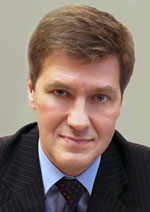
Nikiforov
Vladimir O.
D.Sc., Prof.
doi: 10.17586/2226-1494-2017-17-2-324-331
NUMERICAL SIMULATION OF COOLING PROCESS FOR METAL CYLINDER BY GAS-LIQUID MEDIUM FLOW MOVING HORIZONTALLY IN ANNULAR CHANNEL
Read the full article
For citation: Makarov S.S. Numerical simulation of cooling process for metal cylinder by gas-liquid medium flow moving horizontally in annular channel. Scientific and Technical Journal of Information Technologies, Mechanics and Optics, 2017, vol. 17, no. 2, pp. 324–331 (in Russian). doi: 10.17586/2226-1494-2017-17-2-324-331
Abstract
Subject of Research. The paper reviews the results of numerical simulation of the metal cylinder cooling process by the flow of gas-liquid medium moving horizontally along the surface of high-temperature metal cylinder in the annular channel. The results were obtained on the basis of a mathematical model for coupled heat transfer of gas-liquid medium and the metal cylinder in two-dimensional non-stationary formulation taking into account the axial symmetry of the cooling fluid flow relative to the longitudinal cylinder axis. Method. Control volume method is used for differential equation system solving. The flow field parameters are calculated by SIMPLE algorithm. The method of Gauss-Seidel with lower relaxation is used for the iterative solution of linear algebraic equations systems. Main Results. We have carried out verification of numerical simulation results with the results of analytical evaluation of length values for initial portions of hydrodynamic and thermal stabilization of the flow in the annular channel. We have obtained numerical results of heat transfer parameters at the cooling process of high temperature metal cylinder by gas-liquid flow with consideration for vaporization. The temperature values along the cylinder surface and radially have been defined while cooling by the cooling medium flow at a rate characteristic for laminar fluid flow. The intensity of surface temperature change of the metal cylinder is analyzed depending on the initial temperature, fluid flow rate and time of cooling process.
References













